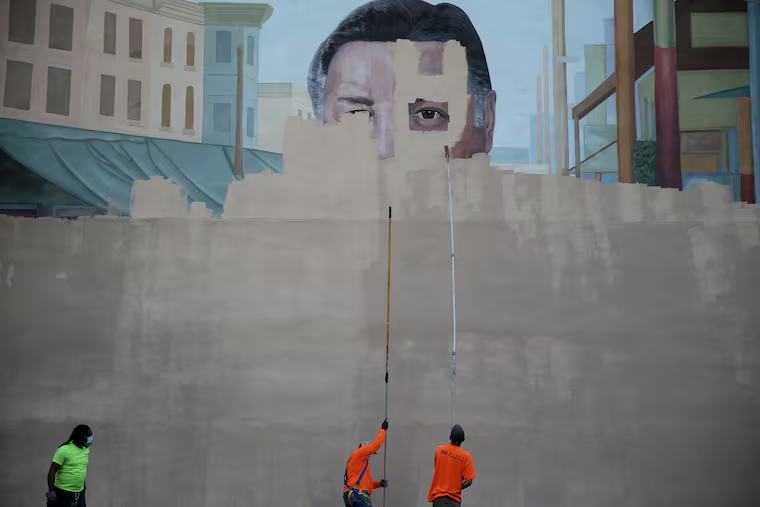‘My eyes feel at peace now’: Frank Rizzo mural is erased, as calls for racial justice bring change to Philly’s Italian Market
Under cover of darkness, amid a national outcry over racial injustices and the killing of George Floyd and a renewed local call to stop glorifying the legacy of a mayor known for his aggressive treatment of the city’s black and gay communities, the mural was painted over early Sunday morning.
